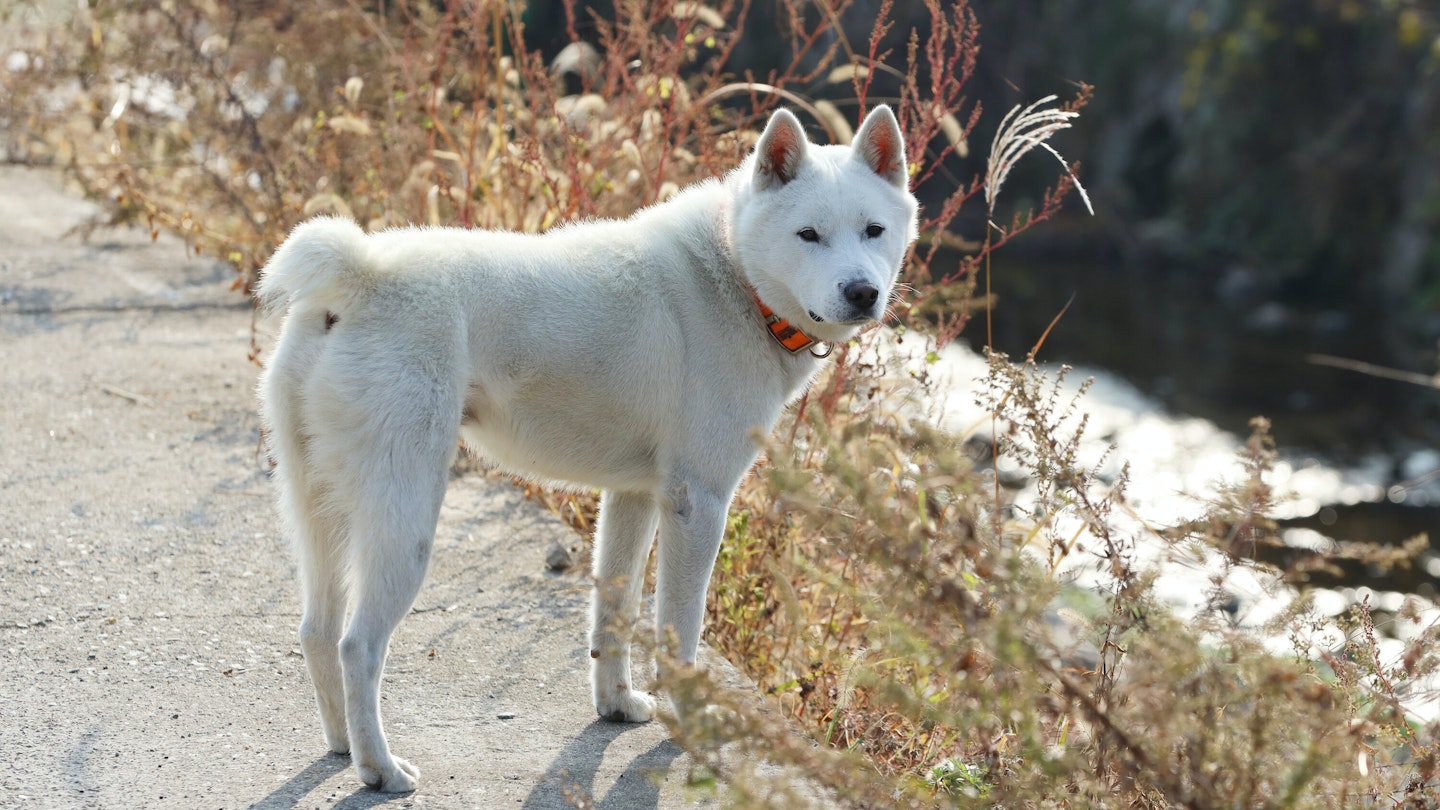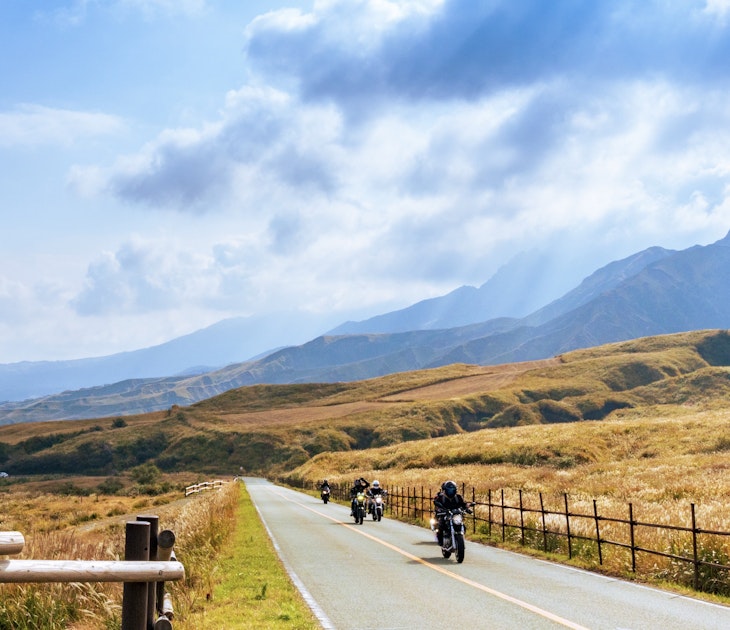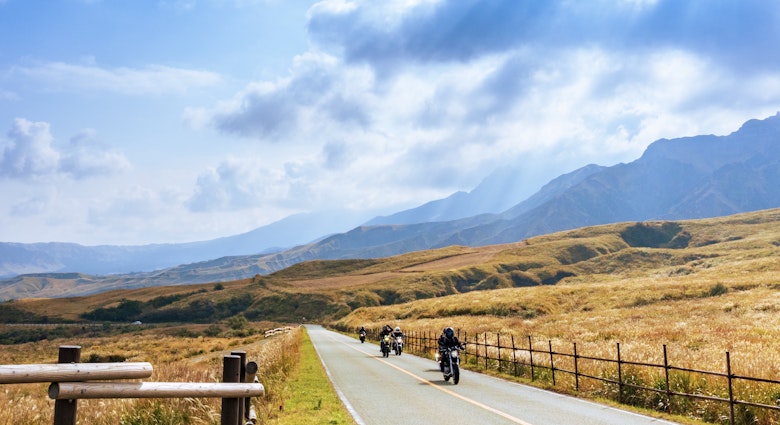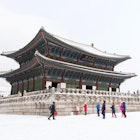Donggyeongi are the pride and joy of Gyeongju, a city in South Korea known for its historical sites. Why, then, are the dogs so hard to find? Writer Ann Babe traveled to Gyeongju on a mission to find out.
Some go to Gyeongju for the tombs, the temples and the palaces – to see relics of the centuries-old Shilla era still standing in the age of selfie sticks and scooter apps. Gyeongju is known in South Korea as a “museum without walls,” home to more Unesco World Heritage sites than any other place in the nation.
I, however, went to Gyeongju for the dogs. Or, rather, one particular breed of dog, the Donggyeongi, a name derived from Gyeongju’s ancient title of Donggyeong or “eastern capital.” Identifiable by its famously bobbed or absent tail, the breed is, like the city’s cherished Unesco sites, its own sort of national treasure. It is, in fact, protected as Natural Monument No. 540 in the South Korean government’s official registry of heritage pieces that range from historic sites to intangible culture.
When I’d heard about this dog, it had been referenced in almost mythical terms. Donggyeongi are also endangered, with only 519 pure-breds registered throughout the entire country. In all my years of roaming South Korea, where I live with my own dog, a rescued Labrador retriever, I’d never come across a single one: not a white one or a black one; nor tan or brindle. Maybe it was time to go directly to the source.
How Gyeongju has become South Korea's city of cool

From royal companion to dog in danger
Donggyeongi date back to the 5th and 6th centuries, as documented by clay figurines of short-tailed dogs excavated from Shilla tombs, making it Korea’s oldest native dog breed on record. Historically bred as pets for royalty, Donggyeongi are prized for their great affinity for humans. As one legend tells it, a Donggyeongi was so loyal to its owner that when the man collapsed along the pair’s 300-km journey from Gyeongju to Seoul, the dog traveled tirelessly back to fetch help, then back again to deliver it. (Upon arrival, the man had already died, and not long after, the dog died too.)
But like the Korean people, Donggyeongi have endured their own history of hardship, according to Choi Seog-gyu, a professor in the department of companion animals at Sorabol University in Gyeongju. During the Japanese occupation, they were killed for their fur to make coats, and in the years that followed, their missing tails were mistaken as a defect and considered a symbol of misfortune. It is this shift in perspective that led to Donggyeongi’s near extinction. People forgot about them.
On my train ride to Gyeongju, I texted some friends in Seoul to find out if they’d ever seen a Donggyeongi. “A what?” came one reply, followed by a string of others expressing similar confusion. I texted my friends in Busan. Also nothing. Maybe the friends in Suwon, Daegu and Jeju? No, no and, then – at last – yes. “I know that it’s one of the Korean dog breeds, but that’s all I know,” wrote one.

Most everyone in South Korea is familiar with the tail-bearing Jindo, another native dog breed that hails from the island of the same name just off the southwestern coast of the peninsula. Also registered as a natural monument, the Jindo has been protected since 1973, decades before the Donggyeongi, allowing it to reach a documented population of more than 50,000 pure-breds. Many also know about the shaggy-haired Sapsaree, the third of South Korea’s trio of protected dog breeds. Donggyeongi, however, proves the most elusive.
Donggyeongi: the pride of Gyeongju
Arriving in Gyeongju, it wasn’t long before I spotted evidence of the mysterious tailless animals. At Gyeongju Station, two Donggyeongi – one plain white and the other with tiger-like stripes – greeted me from within the borders of a giant welcome sign. In the drawing, the dogs had an air of dignity, almost heroism, about them, as they stood facing opposite directions and gazing off into the distance. Cartoon Donggyeongi also made an appearance at various souvenir shops, peeking out from postcards, stickers and handkerchiefs. At each sighting, I felt a strange but certain twinge, what I recognized to be sentimentality. But how, I wondered, was it possible to be nostalgic for something I’d never known?
Gyeongju City: a window to the past and the future

Strolling along the popular cafe street Hwangridan-gil, I decided to stop into a bakery to try the region’s specialty pastry hwangnam bang. Its sweet red bean filling, I was sure, would make the perfect pairing with a cup of bitter coffee. The clerk was chatty. So I asked him, “Do you know where I can find Donggyeongi?”
“You mean real Donggyeongi?” He paused, the gears seeming to turn in his head. “I’m not sure,” he finally replied. “I’m from Gyeongju, but I’ve never seen a real one in my life.” He turned to ask his coworkers, busy slicing cakes and packaging breads, who said they hadn’t either.

At the hotel, I asked about Donggyeongi again. The man at the check-in desk also said he’d never seen one but was committed to searching Naver, a Korean web portal until he found something he could offer. Pointing to a blog post from several years ago, he said that apparently there was a “Donggyeongi Experience Center” inside Gyochon Village, a tourist attraction of historic homes, craft workshops and performance halls. Referring to the cluster of traditional Korean houses circled on my map, I walked southeast, passed the green-brown mounds of the tombs of King Michu and King Naemul, crossed Namcheon Stream over the red and green painted Woljeonggyo Bridge, and looped around to the entrance of the village.
“Oh that’s not here anymore,” the snack shop worker told me apologetically when I asked about the center.
Inside a tourist information booth, friendly guides giggled with amusement. In another, they shook their heads with a smile.
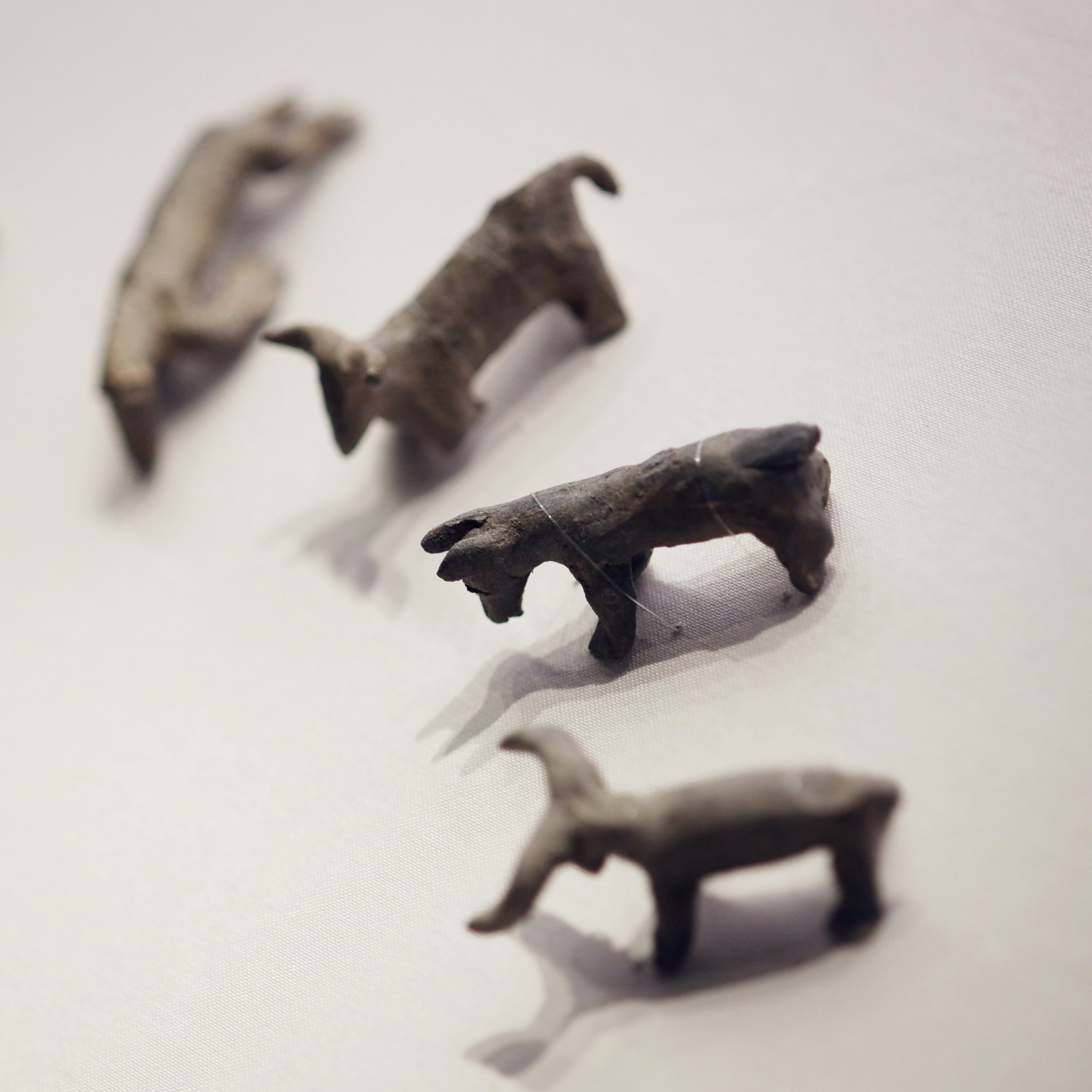
Year of the Donggyeongi
After Gyochon Village, I paid a visit to City Hall, my final stop of the day. Going through the front entrance, where I passed two Donggyeongi statues standing guard, I hoped it would be a step toward finding the real flesh-and-blood ones.
When I told the staff what I was there for, there was a flurry of activity. I was ushered upstairs, where a few team members scurried about preparing coffee, gathering documents and distributing business cards. Then they called up the leader of the city’s animal protection team, Lee Seon-mi, who explained what all the commotion was about. In 2022, to commemorate the tenth anniversary of the breed’s status as a natural monument, the city is developing a scheme to promote Donggyeongi to the public, both domestically and abroad. This involves a new breeding complex, museum, and other tourism facilities.
“Do you have any questions?” she asked. Everyone around the table leaned forward.
“Could you show me a Donggyeongi?” I asked. We went down the hall, where the staff pointed to a Donggyeongi plaque, medal, and more statues. I smiled. “Could you show me a real Donggyeongi?” We hopped into an SUV and drove five minutes northwest to a small first-floor office. If it weren’t for the tailless white dog pictured on the conservation association’s entrance, I might have missed it entirely. Opening the door, four fluffs of fur came rushing toward us, bodies wiggling, eyes inquisitive. “Hello, I’m Choi Seog-gyu,” a man said.
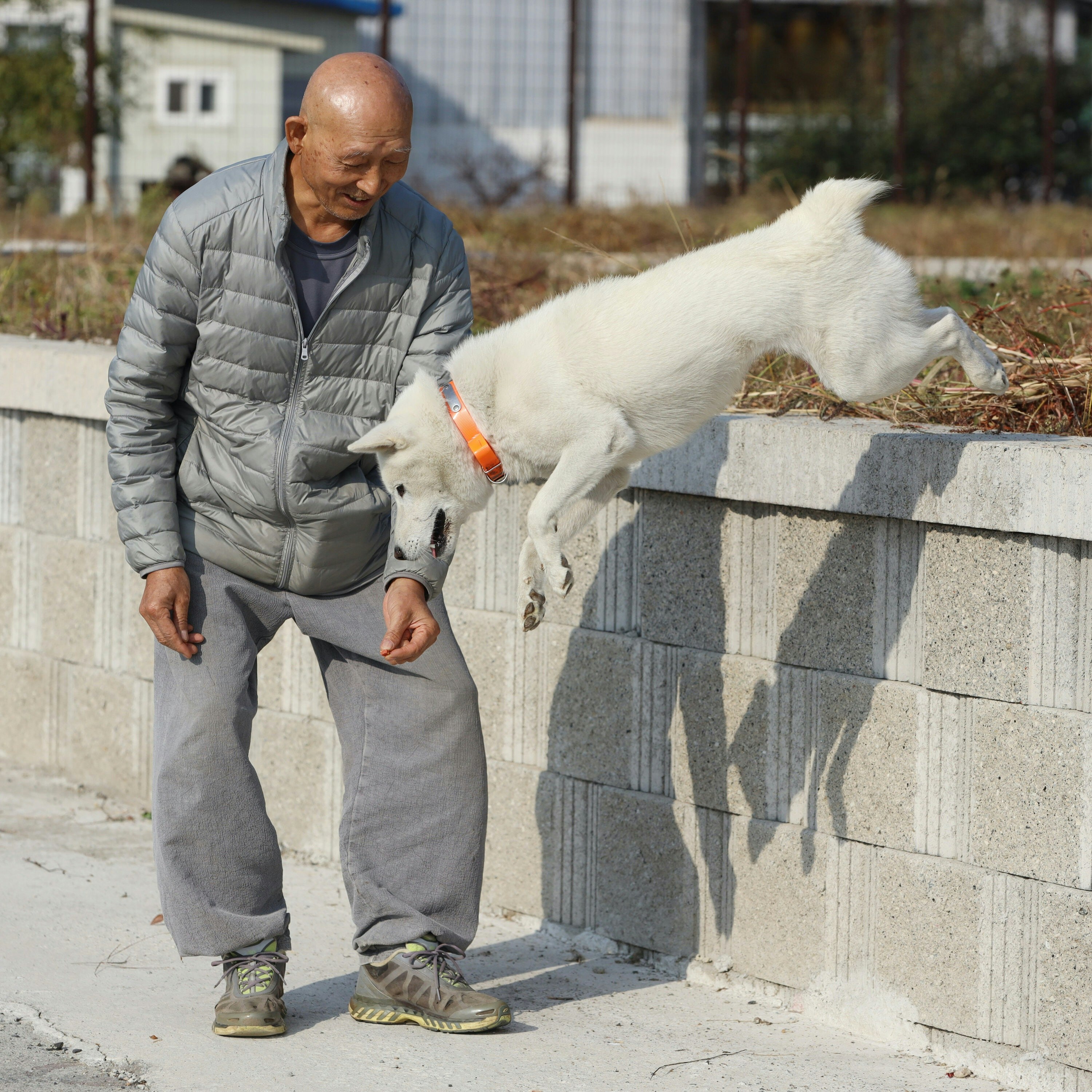
Leading the Donggyeongi revival
Back in 2008, some pet owners in Gyeongju started talking to each other about their curious dogs, wondering why their tails were missing. Was it a deformity? Was it something to be worried about? They wanted answers, so they decided to enlist the help of a researcher, hoping their dogs’ genealogical heritage could be studied. That researcher was Mr. Choi, the professor.
For Mr. Choi, it was a challenge he couldn’t pass up. He left his small apartment and moved into a spacious house, where he raised a white Donggyeongi of his own, whom he named Saeo. He got to work on understanding the breed’s standard and founded the Korean Gyeongju Donggyeong Dog Conservation Association. After two years of research, he earned a Ph.D. in animal sciences, writing his dissertation on the origins and traits of Donggyeongi.
It was the first of numerous papers Mr. Choi has authored or co-authored about the genetics of Donggyeongi, which have, among other findings, offered possible evolutionary explanations for the breed’s short tail. One is gene migration, a result of tailless dogs being brought to Korea by foreign traders. Another is artificial selection, a preference of short tails by its earliest owners. Meanwhile, as Mr. Choi continued his research, Saeo was growing older. When his friend died, he interred her ashes at his family’s ancestral burial site, next to his grandfather.
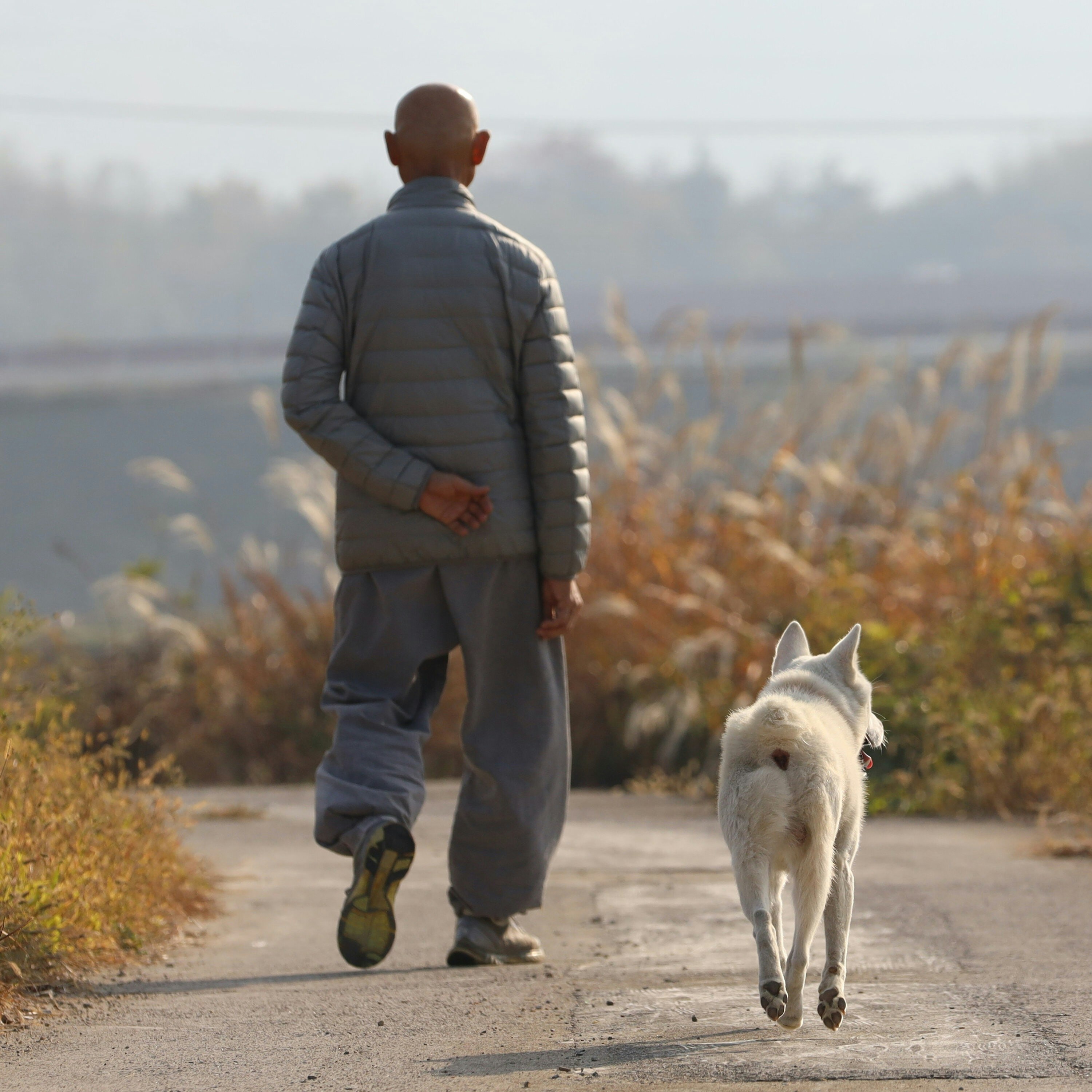
Today, it’s Mr. Choi’s mission to protect Donggyeongi and preserve the purity of their pedigree. Under their classification as a natural monument, pure-breds are registered in a national database and microchipped. Most live in the care of the association, but some are available for personal ownership — for which the rules are strict (cross-breeding prohibited, yard required) and the fee is steep (starting at, for Gyeongju residents, 500,000 won, or about $420). Mr. Choi and the association have also established three Donggyeongi villages throughout the region – identifying existing residential areas whose conditions are optimal for raising the breed.
“A native dog tells us much about a nation,” Mr. Choi told me. “I think they’re alike.” He was seated across the table, wearing a thoughtful expression and holding an energy drink. “Donggyeongi are similar to Korea’s national personality. It is soft, it is not aggressive, it is social and it is friendly.”
Looking down at the Donggyeongi crowded at my feet, sniffing with interest, and thinking about every person who went out of their way to help me get to this place, I had to agree. .
Gyeongju is on our 2022 Best in Travel list. For more stories from some of the world’s most exciting destinations click here.
Safety recommendations and restrictions during a pandemic can change rapidly. Lonely Planet recommends that travelers always check with local authorities for up-to-date guidance before traveling during Covid-19.
You might also like:
Female solo travel: the best places to visit in Asia
Top 30 free things to do in Seoul
KFC: a guide to eating Korean fried chicken in Seoul

